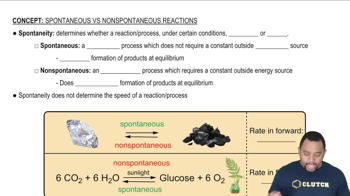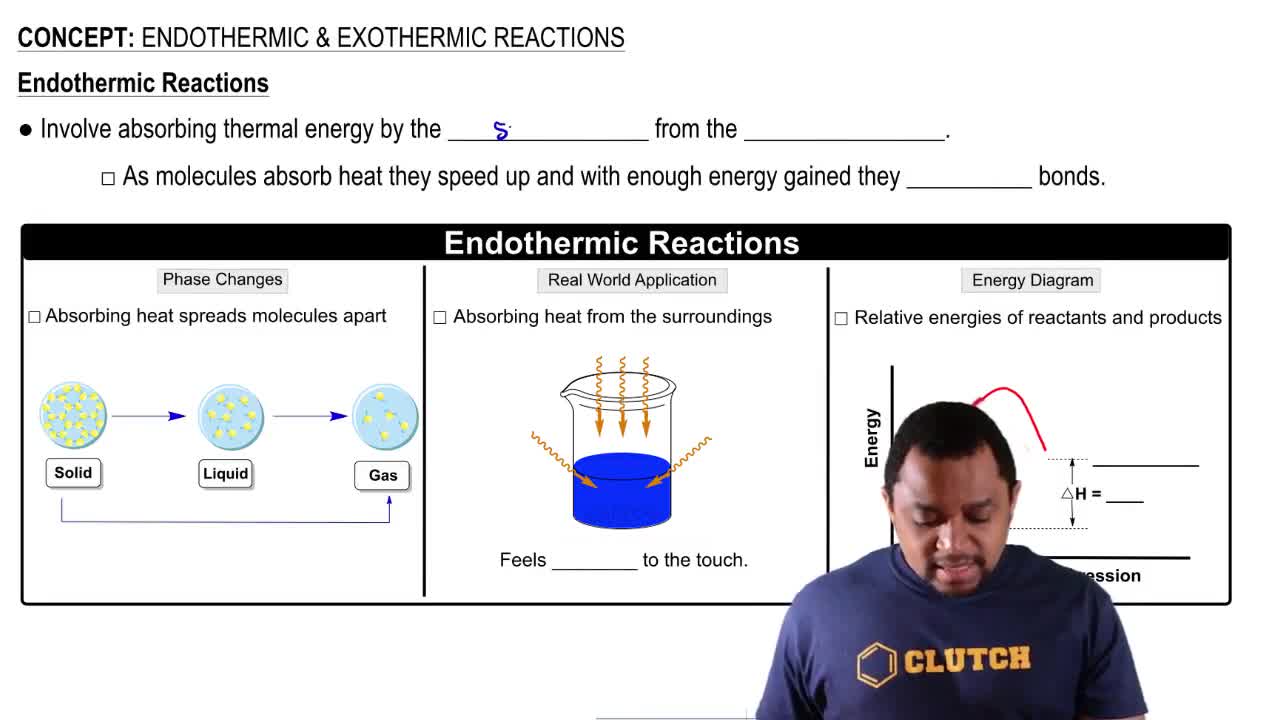Here are the essential concepts you must grasp in order to answer the question correctly.
Spontaneity of Reactions
A reaction is considered spontaneous if it occurs without external intervention. This is often determined by the change in Gibbs free energy (ΔG); if ΔG is negative, the reaction is spontaneous. Spontaneity is influenced by both enthalpy (ΔH) and entropy (ΔS) changes during the reaction.
Recommended video:
Endothermic Reactions
Endothermic reactions absorb heat from their surroundings, resulting in a positive change in enthalpy (ΔH > 0). While these reactions require energy input to proceed, they can still be spontaneous if the increase in entropy (ΔS) is sufficiently large to offset the energy absorbed, leading to a negative ΔG.
Recommended video:
Endothermic & Exothermic Reactions
Gibbs Free Energy Equation
The Gibbs free energy equation, ΔG = ΔH - TΔS, relates the change in free energy to enthalpy and entropy changes at a given temperature (T). For a reaction to be spontaneous, the term TΔS must be greater than ΔH, allowing for a negative ΔG even when ΔH is positive, thus enabling endothermic reactions to occur spontaneously.
Recommended video:
Gibbs Free Energy of Reactions
 Verified step by step guidance
Verified step by step guidance


